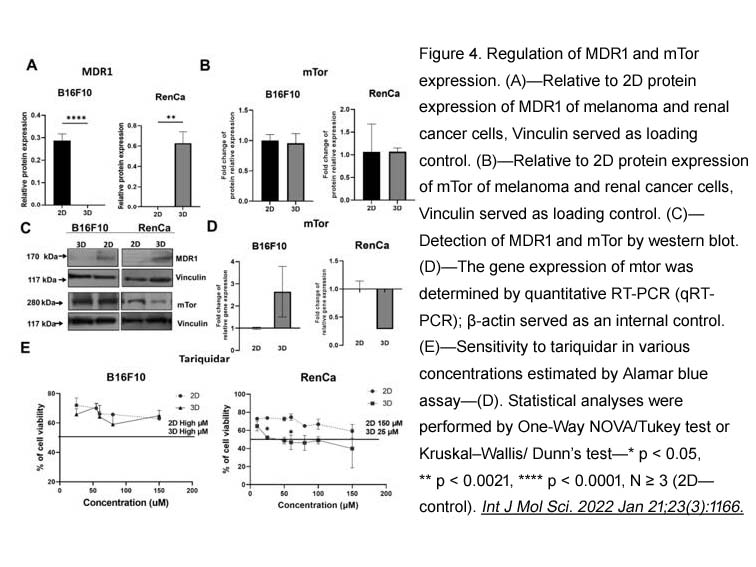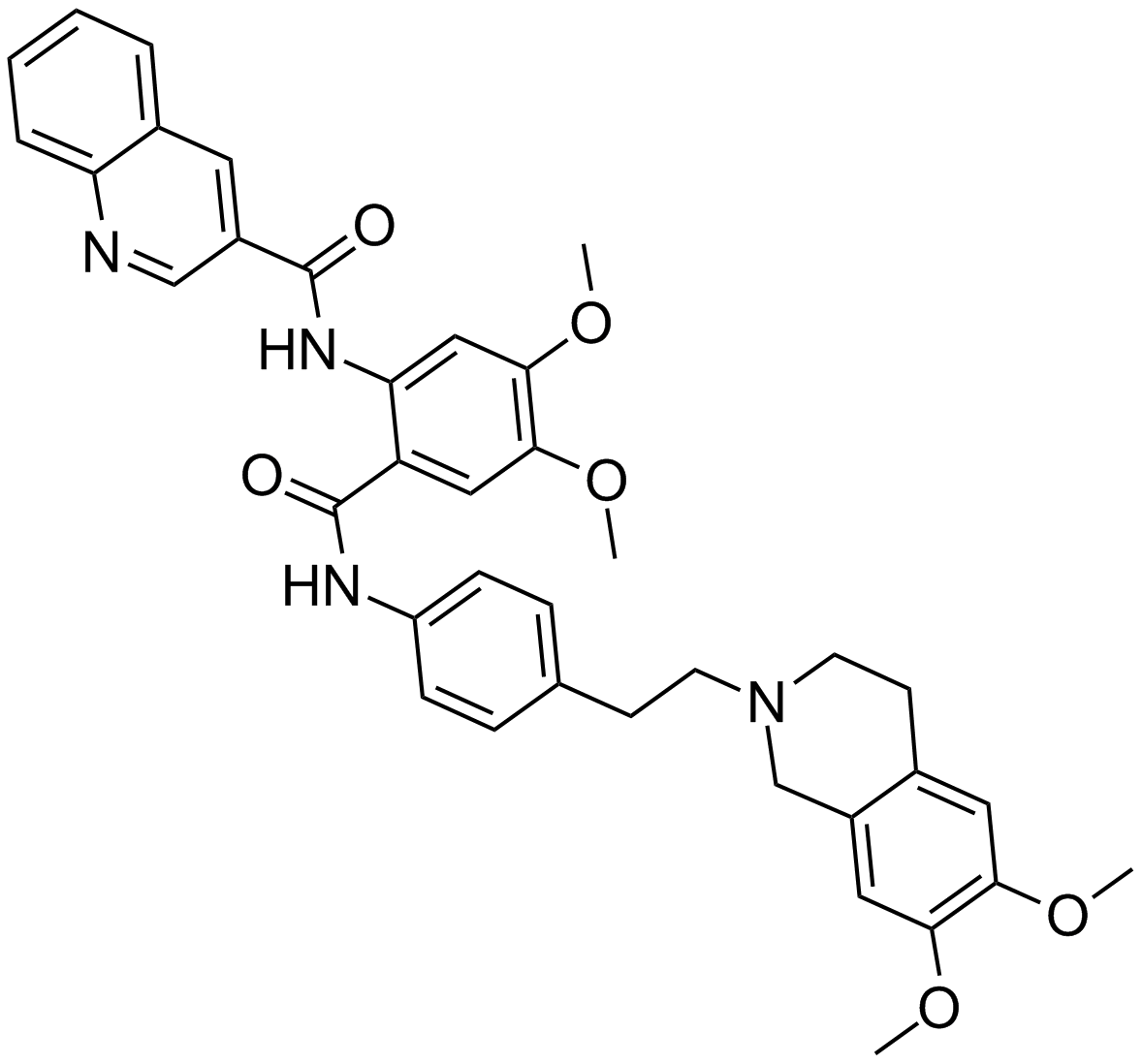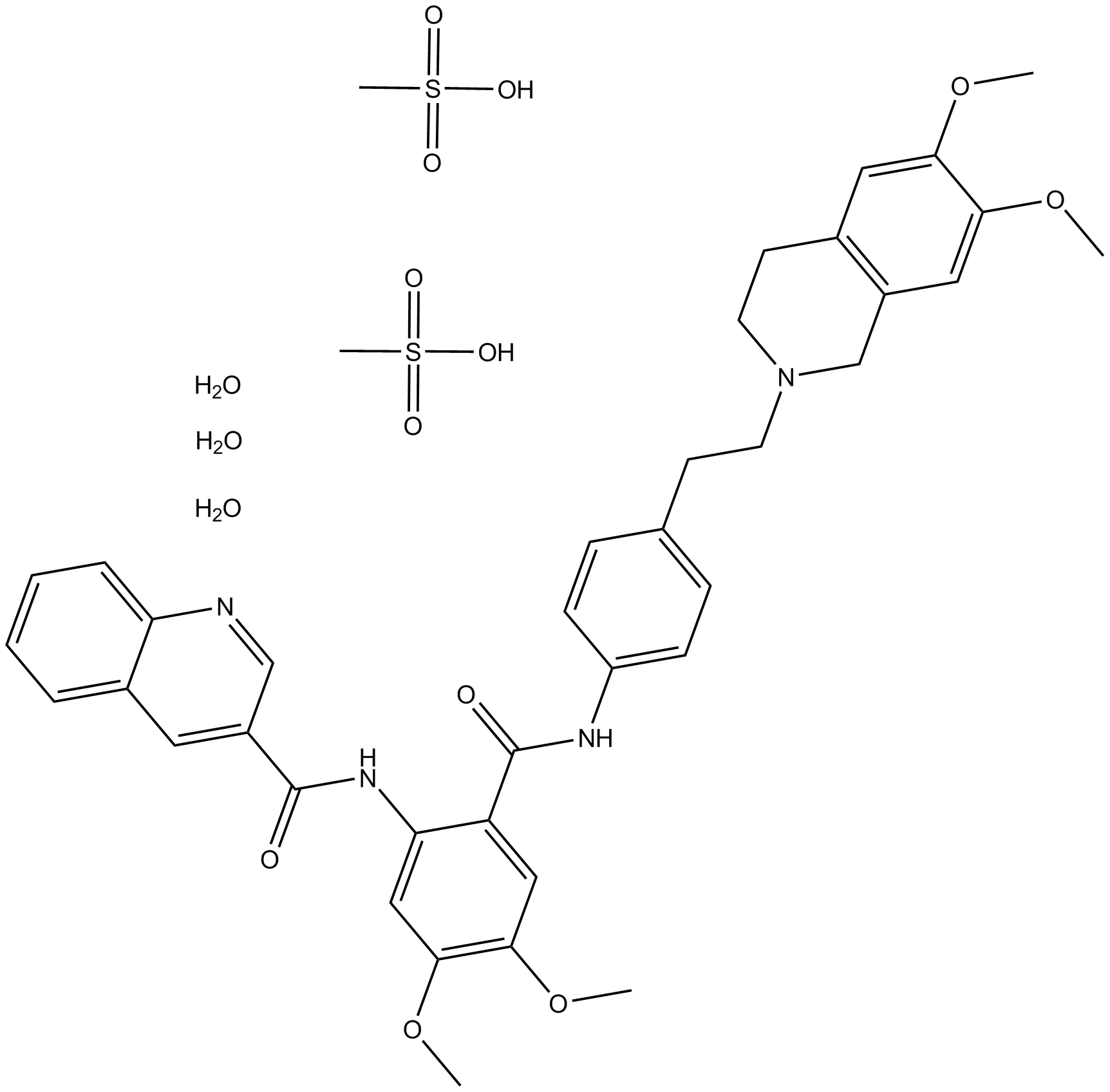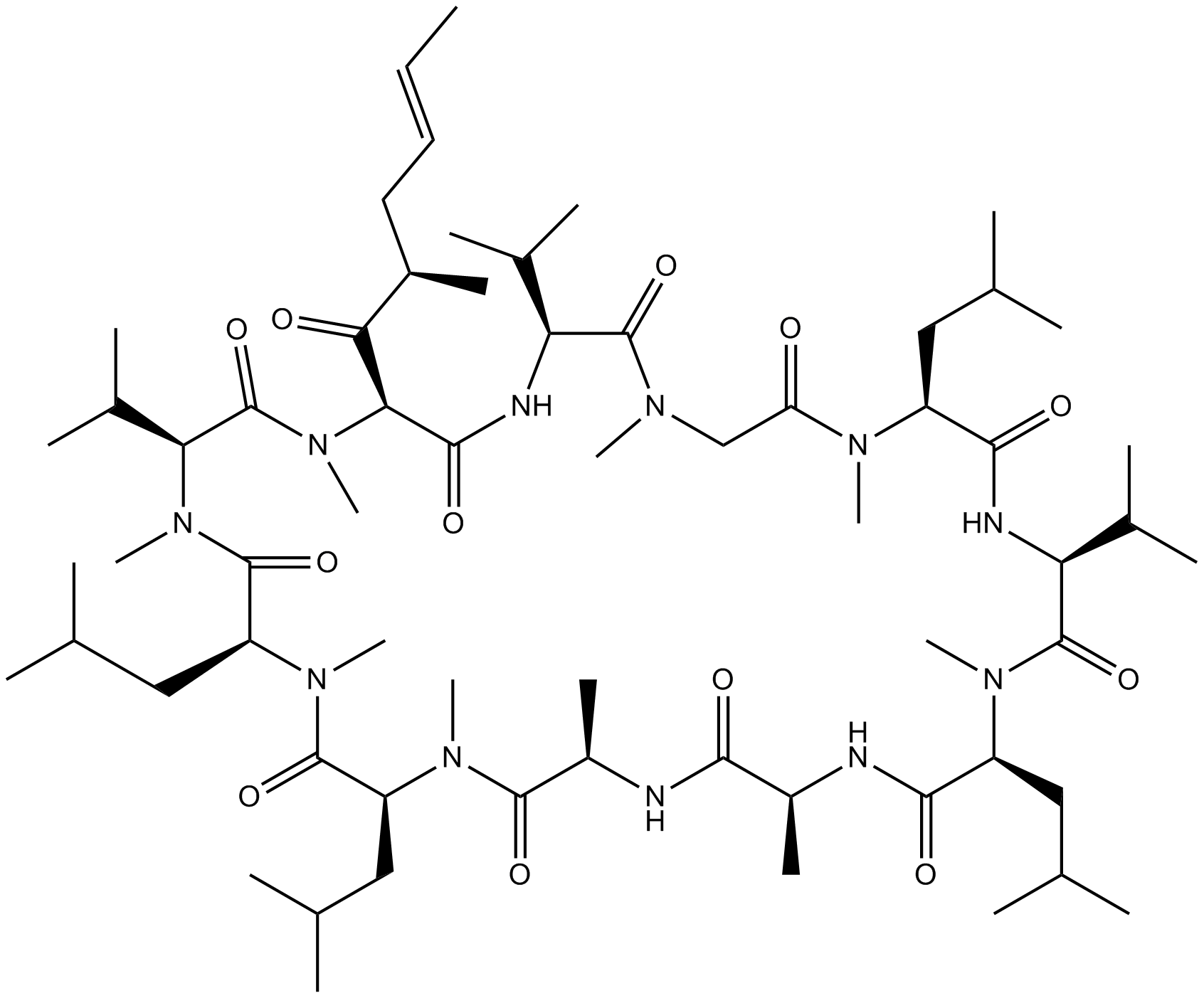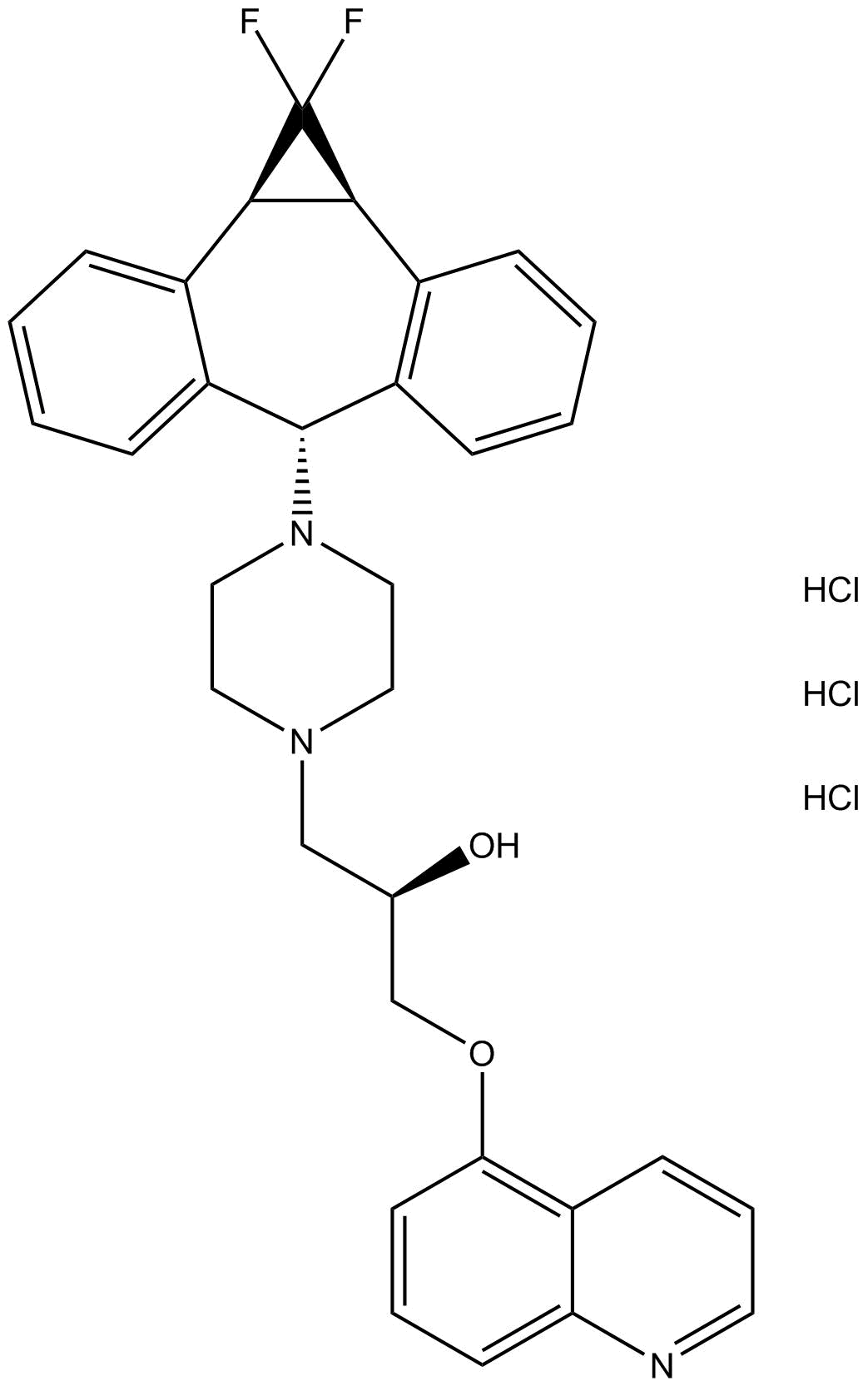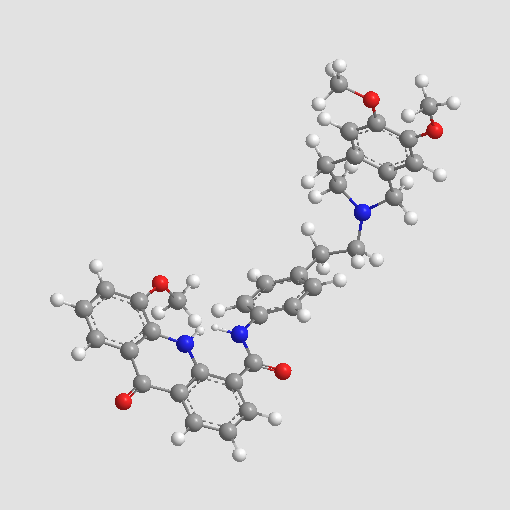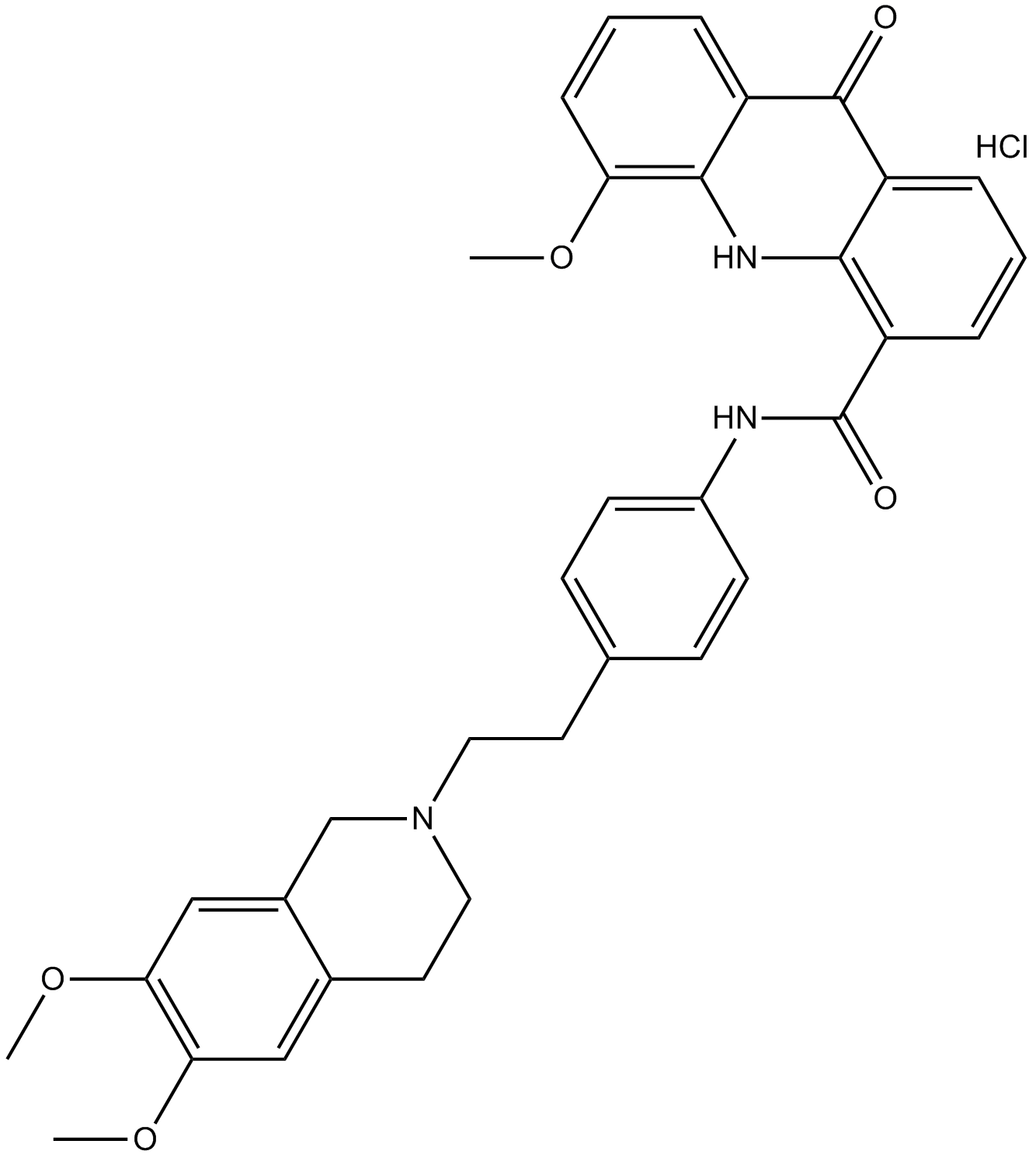Tariquidar
Tariquidar (CAS: 206873-63-4) is a small-molecule inhibitor targeting the efflux transporter P-glycoprotein (Pgp). Pgp, a 170-kDa transmembrane protein, functions primarily as an ATP-dependent drug efflux pump, removing structurally diverse molecules from cells. Tariquidar acts through noncompetitive inhibition of Pgp-associated basal ATPase activity, thereby reducing drug efflux. In vitro assays across several cell models demonstrate tariquidar-mediated Pgp inhibition with IC50 values ranging from 15 to 223 nM. Due to its selectivity for Pgp, tariquidar serves as a significant research tool in studies of drug resistance and transporter-mediated drug disposition.
- 1. Chong-Yin Huang, Meng-Ting Zuo, et al. "Hypoxia tolerance determine differential gelsenicine-induced neurotoxicity between pig and mouse." BMC Med 23, 156 (2025)
- 2. Aleksandra Filipiak-Duliban, Klaudia Brodaczewska, et al. "Spheroid Culture Differentially Affects Cancer Cell Sensitivity to Drugs in Melanoma and RCC Models." Int J Mol Sci. 2022 Jan 21;23(3):1166. PMID:35163092
- 3. Natalia Kasica, Piotr Jakubowski, et al. "P-Glycoprotein Inhibitor Tariquidar Plays an Important Regulatory Role in Pigmentation in Larval Zebrafish." Cells. 2021 Mar 20;10(3):690. PMID:33804686
- 4. Mohammadpour R, Safarian S, et al. "Comparative Endocytosis Mechanisms and Anticancer Effect of HPMA Copolymer- and PAMAM Dendrimer-MTCP Conjugates for Photodynamic Therapy." Macromol Biosci. 2016 Oct 25. PMID:27779358
- 5. Sajja, Ravi K., and Luca Cucullo. "Altered glycaemia differentially modulates efflux transporter expression and activity in hCMEC/D3 cell line." Neuroscience letters 598 (2015): 59-65. PMID:25982326
| Physical Appearance | A solid |
| Storage | Store at -20°C |
| M.Wt | 646.73 |
| Cas No. | 206873-63-4 |
| Formula | C38H38N4O6 |
| Synonyms | XR9576, XR 9576, XR-9576,Tariquidar |
| Solubility | insoluble in H2O; insoluble in EtOH; ≥16.17 mg/mL in DMSO |
| Chemical Name | N-[2-[[4-[2-(6,7-dimethoxy-3,4-dihydro-1H-isoquinolin-2-yl)ethyl]phenyl]carbamoyl]-4,5-dimethoxyphenyl]quinoline-3-carboxamide |
| SDF | Download SDF |
| Canonical SMILES | COC1=C(C=C2CN(CCC2=C1)CCC3=CC=C(C=C3)NC(=O)C4=CC(=C(C=C4NC(=O)C5=CC6=CC=CC=C6N=C5)OC)OC)OC |
| Shipping Condition | Small Molecules with Blue Ice, Modified Nucleotides with Dry Ice. |
| General tips | We do not recommend long-term storage for the solution, please use it up soon. |
| Cell experiment: [1] | |
|
Cell lines |
KB-3-1, KB-8-5-11 (ABCB1-expressing variant), MCF-7, MCF-7/VP16 (ABCC1-expressing variant), H460, H460/MX20 (ABCG2-expressing variant) |
|
Preparation method |
The solubility of this compound in DMSO is >10 mM. General tips for obtaining a higher concentration: Please warm the tube at 37 °C for 10 minutes and/or shake it in the ultrasonic bath for a while.Stock solution can be stored below -20°C for several months. |
|
Reaction Conditions |
≥ 100 nM |
|
Applications |
At concentrations ≥ 100 nM, tariquidar inhibited both P-gp and BCRP but did not inhibit MRP1. Accumulation of the fluorescent substrate calcein-AM in ABCB1-expressing cells treated with 100 nM and 1 μM tariquidar increased 14-fold and 19-fold, respectively. Most P-gp was inhibited at 100 nM. At the same concentrations, tariquidar also increased the accumulation of the fluorescent substrate mitoxantrone in ABCG2-expressing cells by 4-fold (P |
| Animal experiment: [2] | |
|
Animal models |
NMRI nu/nu mice |
|
Dosage form |
Oral administration, 0.1 ml/10 g of body weight |
|
Applications |
The ABCB1 modulator tariquidar affects the distribution of paclitaxel in nude mice. In the brains, Co-application of tariquidar with paclitaxel led to a comparable increase in the brain concentration of the cytostatic by a factor of 2.5-to 6.7. In liver, no statistically significant differences were determined between the different ABCB1 modulator group and the control group. In the kidneys, the paclitaxel content in kidney decreased to achieve concentrations similar to those in the untreated control group. |
|
Other notes |
Please test the solubility of all compounds indoor, and the actual solubility may slightly differ with the theoretical value. This is caused by an experimental system error and it is normal. |
|
References: [1] Kannan P, Telu S, Shukla S, et al. The “specific” P-glycoprotein inhibitor tariquidar is also a substrate and an inhibitor for breast cancer resistance protein (BCRP/ABCG2). ACS chemical neuroscience, 2010, 2(2): 82-89. [2] Hubensack M, Müller C, Höcherl P, et al. Effect of the ABCB1 modulators elacridar and tariquidar on the distribution of paclitaxel in nude mice. Journal of cancer research and clinical oncology, 2008, 134(5): 597-607. |
|
| Description | Tariquidar (XR9576) is a potent and selective noncompetitive inhibitor of P-glycoprotein with Kd of 5.1 nM. | |||||
| Targets | P-glycoprotein | |||||
| IC50 | 5.1 nM (Kd) | |||||
Quality Control & MSDS
- View current batch:
Chemical structure
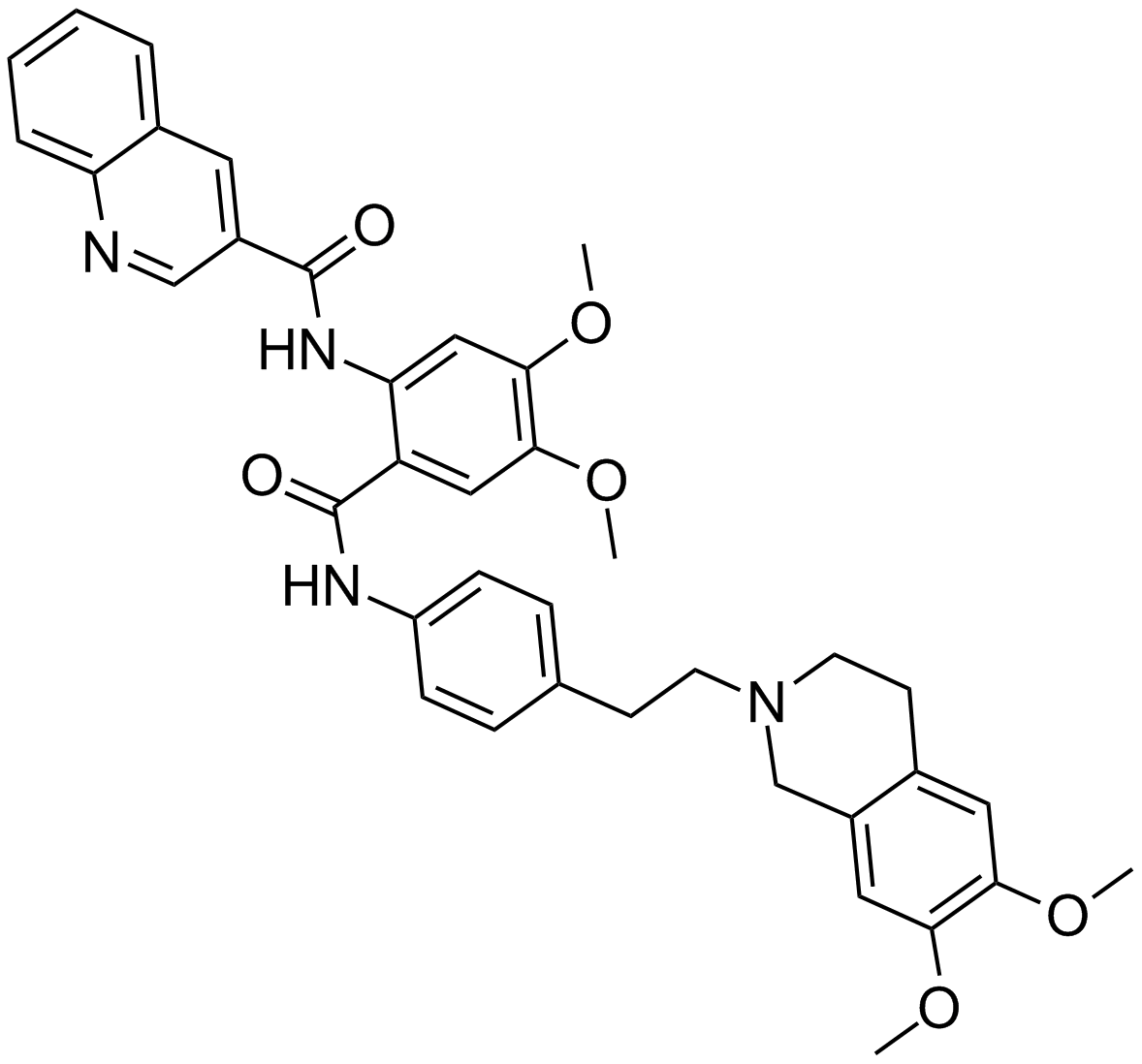
Related Biological Data
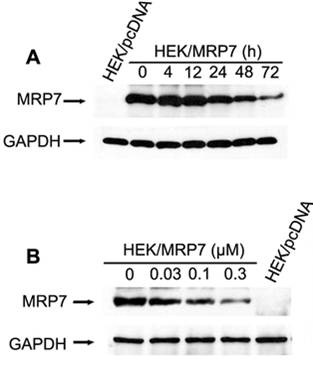
Related Biological Data
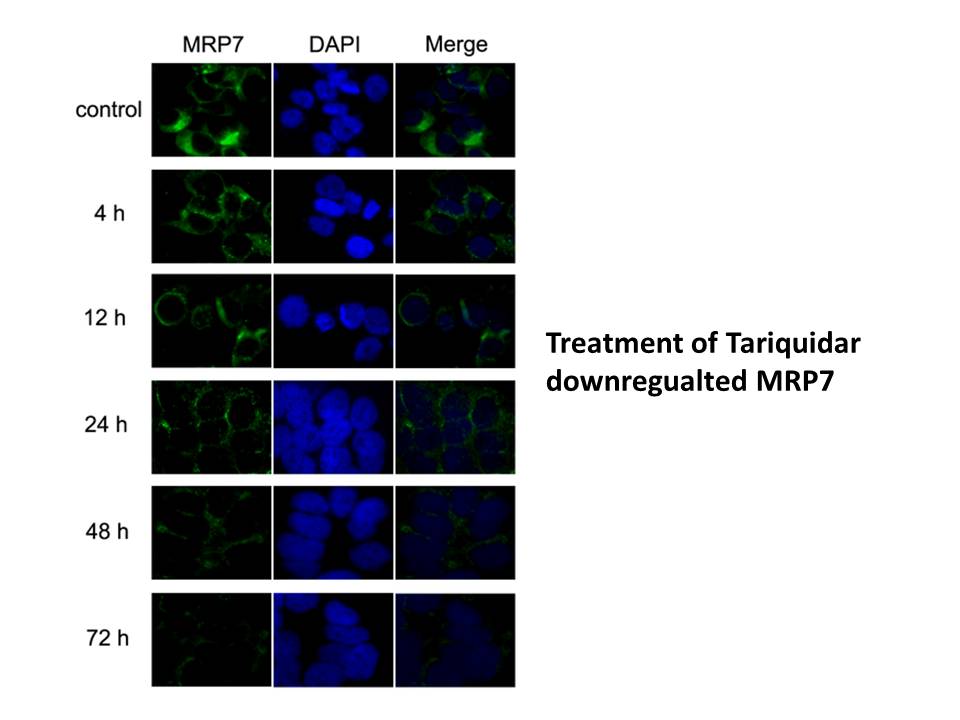
Related Biological Data
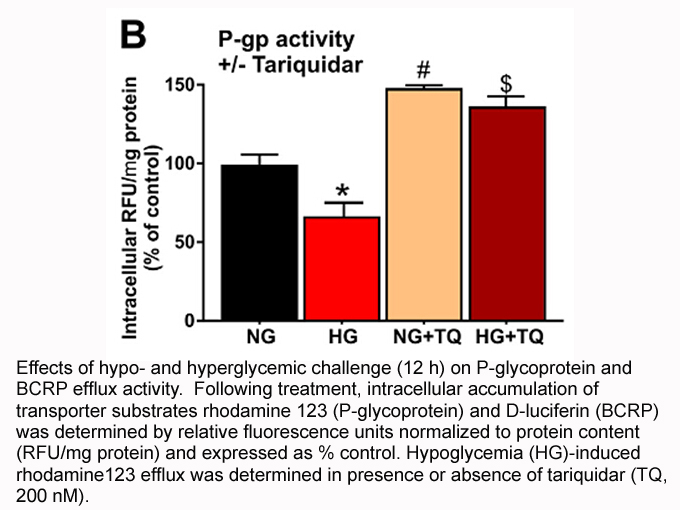
Related Biological Data
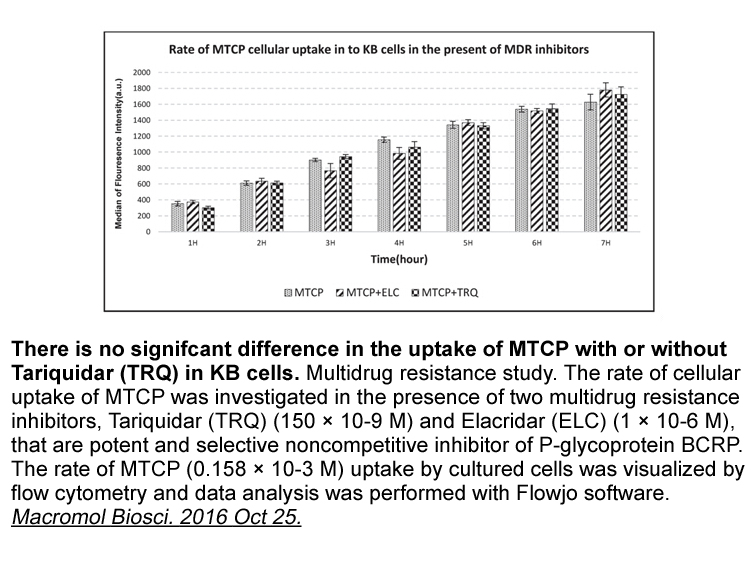
Related Biological Data
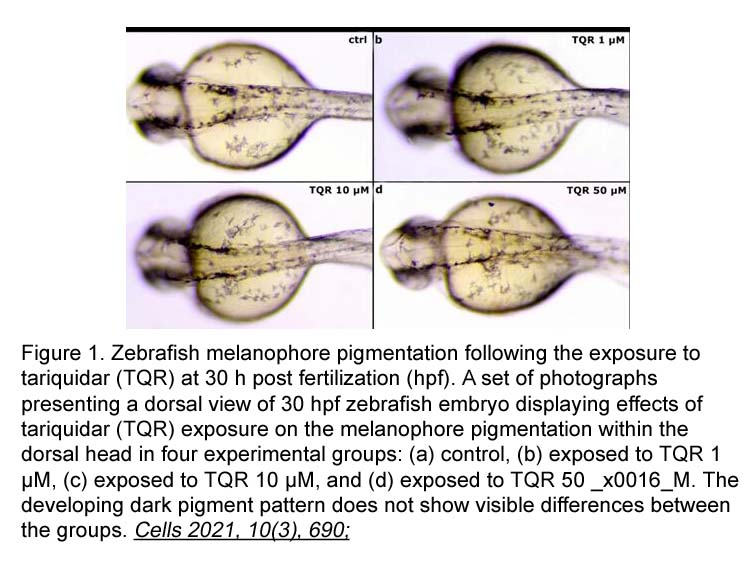
Related Biological Data
